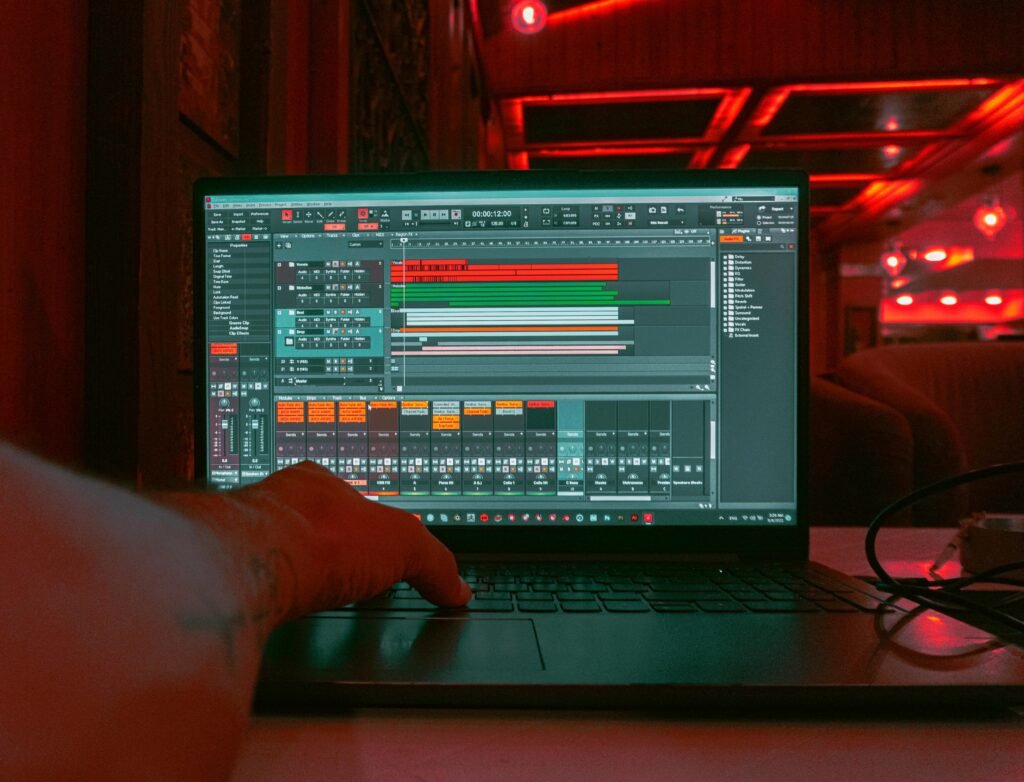The Digital Audio Workstation (DAW) has become the backbone of the modern music industry, providing access to musicians from all walks of life to record, edit, and create music with unprecedented ease. For those new to the world of digital music production, understanding the basics of DAW is an essential first step in their creative journey. This article will delve into what DAW is, its fundamental features, as well as tips and advice for getting started with your chosen DAW.

What is a Digital Audio Workstation (DAW)?
A Digital Audio Workstation (DAW) is software designed to record, edit, and process audio digitally. DAWs have replaced traditional recording studios by allowing users to conduct their production processes within their personal computers. DAWs not only provide tools for recording sound and manipulating audio but also offer features such as mixing, mastering, and broader multimedia production capabilities.
Basic Features of DAW:
- Audio Recording: One of the key features of DAW is its ability to record audio from various sources, including microphones, musical instruments, or other digital signals. DAWs provide detailed controls for adjusting input levels, metronome settings, and multi-track recording.
- Audio Editing: DAWs enable users to edit audio with high precision. Basic editing features include cutting, copying, pasting, and shifting. Additionally, DAWs are often equipped with effects and audio processing tools to correct performance errors or create creative effects.
- Mixing and Mastering: DAWs allow users to mix multiple audio tracks into a balanced composition. The mixing process involves adjusting sound levels, panning, equalization, as well as applying effects such as reverb and delay. Once the mixing process is complete, mastering is used to adjust overall sound levels and prepare recordings for distribution.
- Virtual Instruments and MIDI: DAWs often come with libraries of virtual instruments that allow users to create music using synthesizers, samplers, and other virtual instruments. Additionally, DAWs support MIDI protocols for connecting and controlling external musical devices.
- Multimedia Projects: Some DAWs also provide features for multimedia production, such as adding sound to videos, creating sound effects for games, or editing audio for film and television.
Getting Started with DAW:
- Choose the Right DAW: The first step is to choose a DAW that suits your needs and preferences. There are many DAW options available, ranging from free to paid, with various features and complexities. Some popular DAWs include Pro Tools, Ableton Live, Logic Pro, FL Studio, and Reaper.
- Learn the Interface: Once you’ve selected a DAW, take the time to familiarize yourself with its interface and workflow. Read the user guide, watch online tutorials, and explore the various features offered.
- Start with Simple Projects: Once you feel comfortable with the DAW interface, try creating a simple music project. Start by recording some basic audio tracks, add some effects, and experiment with mixing.
- Explore Additional Features: Next, explore the additional features of your DAW, such as using virtual instruments, MIDI setups, or advanced mixing techniques. Don’t be afraid to try new things and develop your skills gradually.
- Keep Learning: The world of digital music production is constantly evolving, so make sure to keep learning and staying updated on new technologies in the industry. Join online communities, take training courses, and network with fellow music producers.
Tips and Tricks for Optimizing DAW Usage:
- Use Shortcuts: Understanding DAW keyboard shortcuts can save you time and increase productivity while working.
- Maintain Good Project Organization: Always strive to keep your projects well-organized by clearly labeling tracks, groups, and effects.
- Learn from Tutorials and Other Resources: The internet is full of tutorials, webinars, and discussion forums that can help you master your DAW better.
- Experiment with Effects and Mixing Techniques: Be creative and don’t be afraid to try out new effects and mixing techniques to create unique and engaging sounds.
Conclusion:
Understanding the basics of Digital Audio Workstation (DAW) is an essential first step for beginners in the world of digital music production. By providing tools for recording, editing, and processing audio, as well as additional features such as mixing, mastering, and multimedia production, DAWs offer opportunities for anyone to express their creativity in music. By choosing the right DAW for your needs, learning its features, and continually developing your skills, you can take the first step towards an exciting journey in the world of digital music production. Happy experimenting!